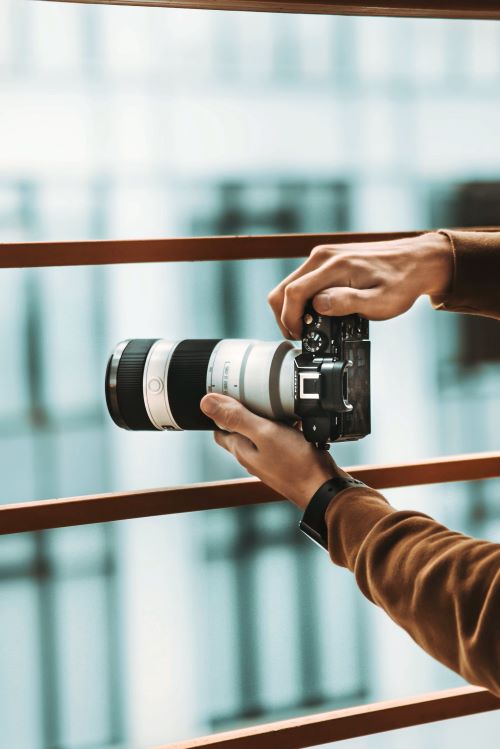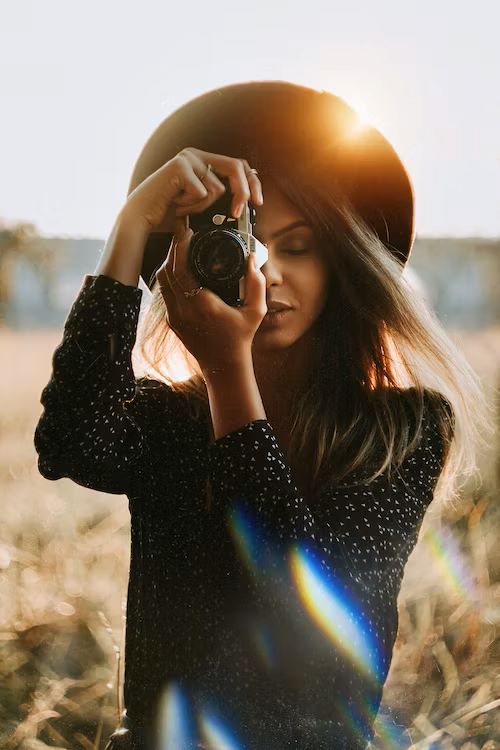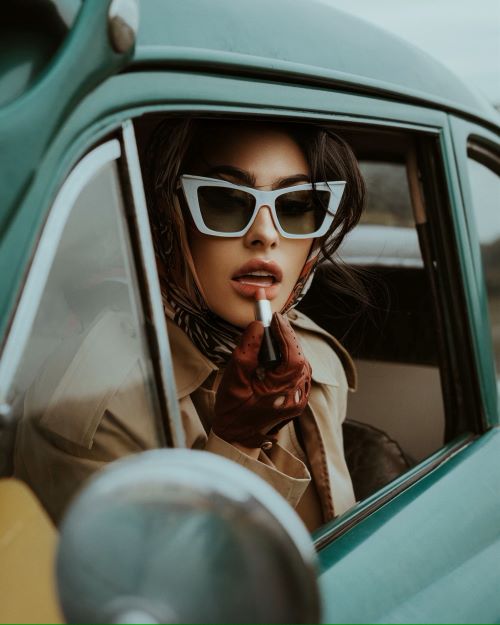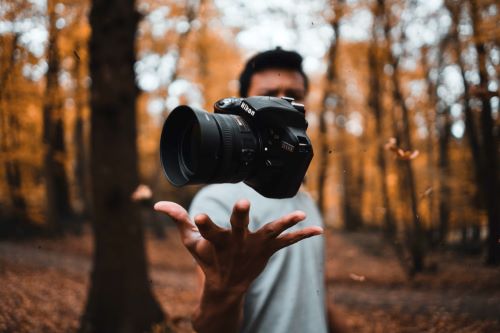Photography is a wonderful way to capture the beauty that surrounds us. If you’re just starting, the possibilities may seem a bit overwhelming.
But don’t worry. This guide is here to offer essential tips and tricks, specially designed for novice shutterbugs like you, helping you not only navigate the world of photography but also enjoy the enchanting experience it brings.
Understanding your camera

Dive into camera mode.
Knowing your camera is the initial key to capturing great photos. Whether it’s a smartphone, point-and-shoot, or DSLR, get familiar with its basic functions. Begin with auto mode if you’re a beginner, and slowly explore other camera modes as you become more at ease with your camera.
Master the Basics
Explore key camera settings like ISO, aperture, and shutter speed. These settings control how bright your photos are, what’s in focus, and how the movement looks. Try out each setting to see how it changes your pictures. It’s like learning to use your camera with confidence!
Composing Captivating Images

Rule of Thirds in Action
According to digital photography school, the rule of thirds is a compositional guideline that breaks an image down into thirds (both horizontally and vertically), so you have nine pieces and four gridlines.
According to the rule, by positioning key elements along the gridlines, you’ll end up with better compositions. Therefore, to apply the rule to your photos, simply use the gridlines to position essential compositional elements.
What do I mean by this? Well, when shooting a flower, you would place its stem or head along the right or left vertical gridline.
By adhering to the Rule of Thirds, you achieve a more balanced and aesthetically pleasing result. It invites the viewer’s gaze to naturally flow across the frame, engaging with different elements in a deliberate sequence. Placing your main subject or focal point at the intersections creates a focal point of interest and emphasizes the subject’s importance within the overall narrative of the photograph.
This technique goes beyond mere placement; it encourages photographers to consider the entire frame, fostering a thoughtful approach to composition. Whether it’s a stunning landscape, a captivating portrait, or an intricate still life, applying the Rule of Thirds allows you to infuse your images with a sense of visual sophistication.
Moreover, this rule complements other composition techniques, such as leading lines and framing, creating a synergy that elevates the overall impact of your photographs. As you become proficient in utilizing the Rule of Thirds, you’ll notice a transformative shift in your ability to capture attention-grabbing and emotionally resonant images. So, as you embark on your photographic journey, consider the Rule of Thirds as your guiding principle, unlocking the potential for visually compelling storytelling through your lens.
Embrace leading lines.
Guide your viewer’s eyes using leading lines—like roads, rivers, or buildings. These lines add depth and make your photos more interesting. They also tell a story through your pictures, making them even more engaging.
The art of framing

Framing involves using elements within your scene to frame your main subject. From natural frames like archways to artificial ones like tree branches, framing adds context and draws attention to the focal point, creating layers and depth in your composition.
Mastering Light

The Magic of the Golden Hour
Knowing how light works is key in photography. The golden hour, right after sunrise or before sunset, gives warm, soft light that makes your subjects look great. Use this special time to take amazing pictures of people and landscapes.
Understanding Shadows
Take a close look at how light and shadows interact in your photos. Shadows, if you use them on purpose, can make your pictures more exciting and layered. Get the hang of balancing and using shadows to create visually interesting pictures.
Learning to play with light and shadows helps you craft captivating compositions that grab attention and tell a compelling story through your photos. It’s like painting with light and shadows to make your pictures stand out.
Unleash the Power of Flash

Don’t be afraid to use your camera’s flash when it’s dark. Try out different flash settings and modifiers to see how they light up your subjects. Learning to use the flash is important in different lighting situations, and it can make your photos look better by brightening things up. So, don’t hesitate to give it a shot!
Post-Processing Basics
Precision in Cropping
After taking photos, make them better with post-processing. Begin by cropping to improve how things look and get rid of distractions. Make sure your horizon lines are straight for a polished and professional appearance. Adjusting these details can boost the quality of your pictures. It’s like giving your photos a little touch-up to make them look even better!
Balancing Exposure and Contrast
Adjust exposure and contrast for a balanced look in your photos. Tweaking these settings can make your pictures more attractive and professional. It’s like giving your photos a little boost to make them stand out and look good.
Creative Exploration with Filters
Try using filters or presets after taking photos to give them cool effects. Aim for a subtle touch, so your pictures look better without being too much. This step adds a personal and artistic feel to your photography. It’s like adding a unique touch to make your photos stand out with a bit of creative flair.
Developing Your Style

Exploring photography genres
Try different kinds of photography, like landscapes, portraits, macros, or street shots. Finding what you like helps you focus and tell better visual stories. Trying out different types of photos makes you better at taking pictures in general. It’s like finding your style and getting good at lots of photo styles.
Consistency for Cohesiveness
It’s good to try new things, but having a consistent style makes your photos unique. Using similar themes, colours, or editing in your pictures creates a portfolio that looks connected and special. It’s like having your own signature style that makes your work really stand out.
Learning from others
Studying photography
Photography is always changing, and you can learn a lot from experts. Look at famous photographers’ work to see how they take pictures, what they include, and the feelings their photos create. Learning from these pros helps you get better at taking pictures too. It’s like getting tips from the best to improve your own photography skills.
Engaging in photography communities
Join online groups with other photographers. Share your photos, ask for advice, and learn from others. Being in a photography community can really inspire and motivate you. It’s a chance to grow, work together, and get new ideas for your photos.
Enrolling in workshops and courses
Think about joining photography workshops or online classes. They give you organised learning, helpful tips, and advice from experts. Taking these courses can speed up how fast you learn, helping you get better and feel more confident in your photography skills. It’s like having a guided path to improve your abilities.
Starting photography as a beginner is fun and rewarding. With these tips, you can capture beautiful moments and show your unique view. It’s not just about technical stuff; it’s about telling stories and sharing feelings. Grab your camera, explore, and let your creativity fly in the exciting world of photography. Happy shooting!
